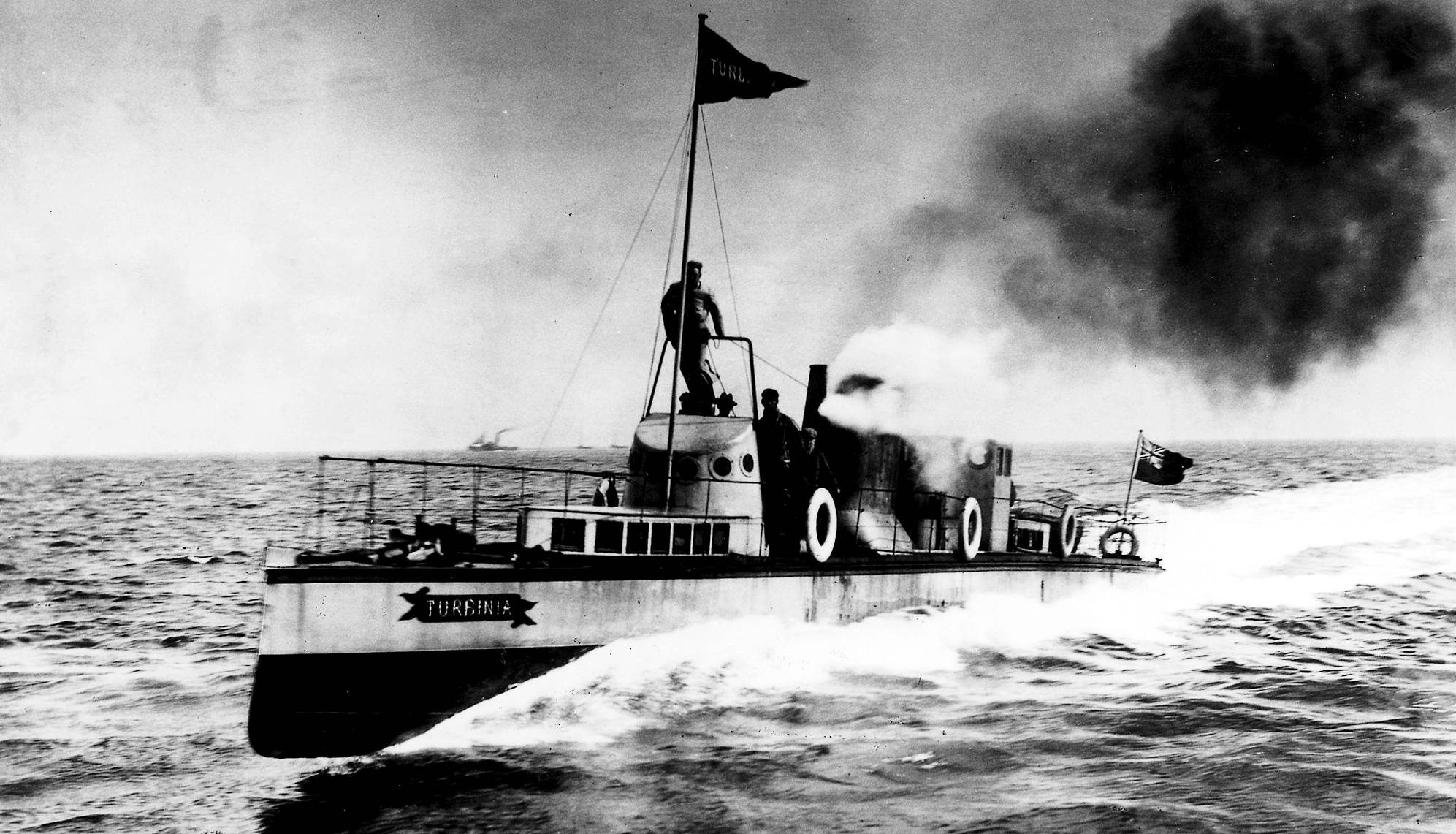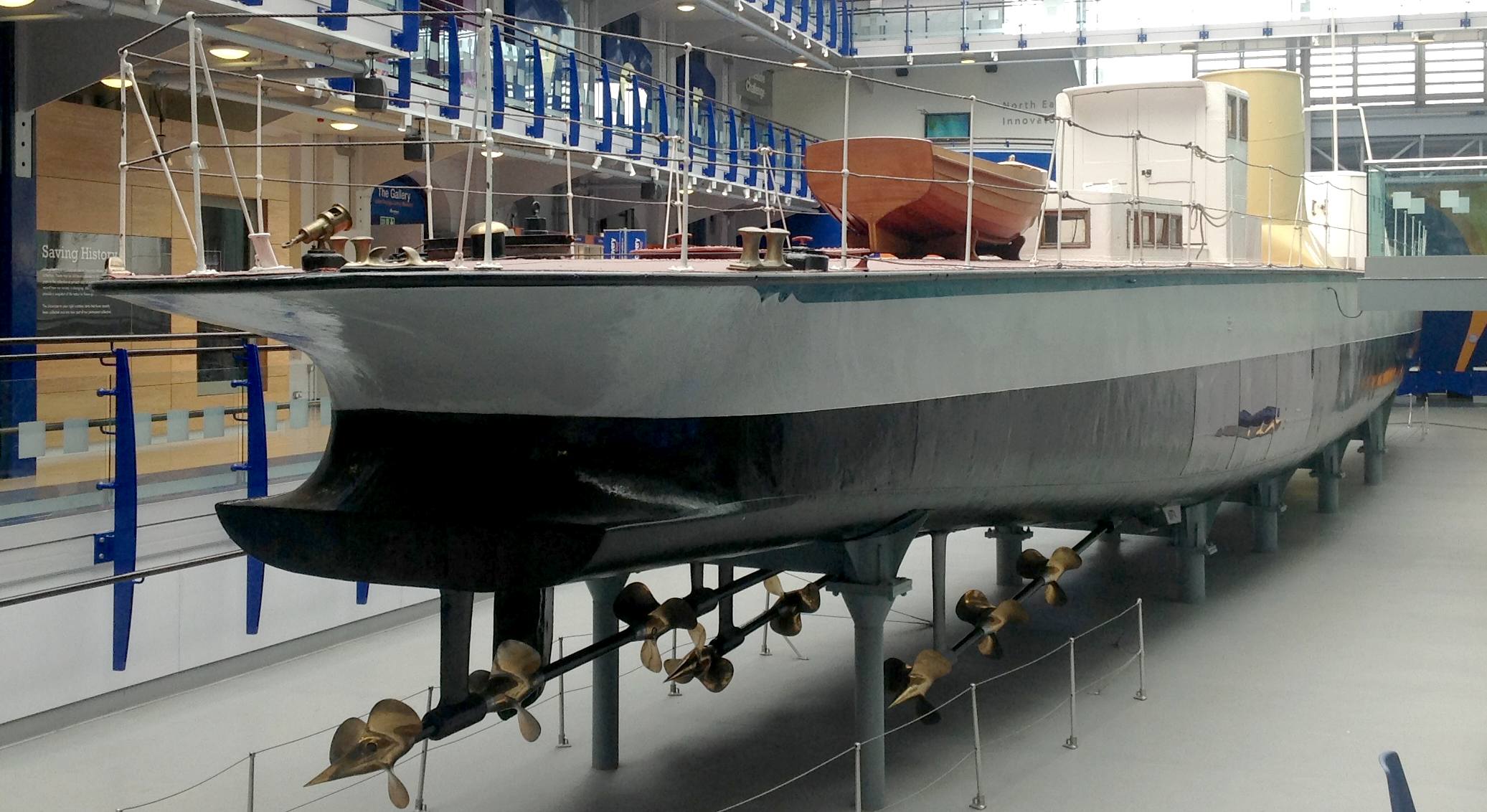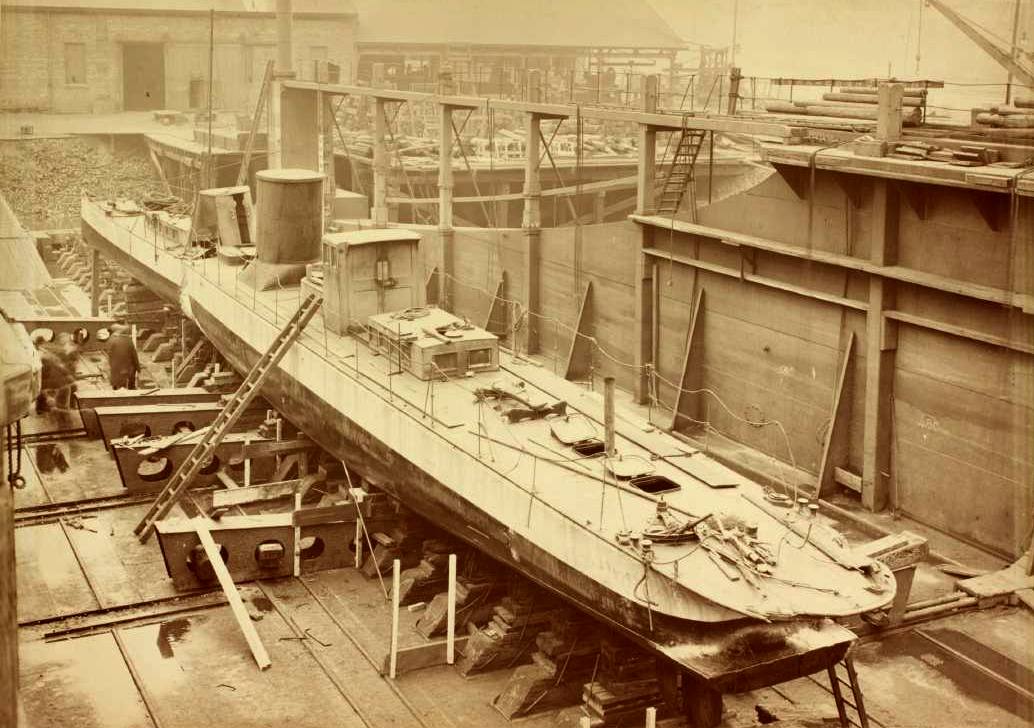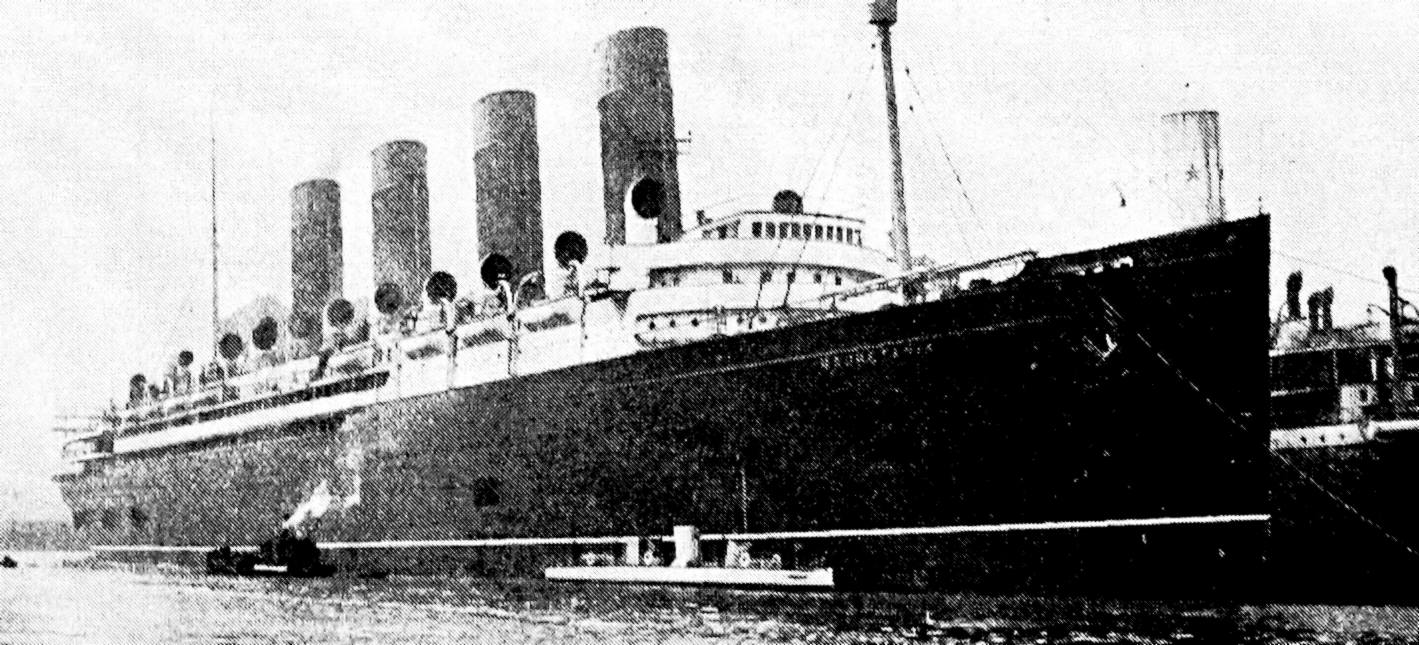|

Turbinia
full steam ahead in 1897
Turbinia was the first steam
turbine powered ship. Built as an experimental vessel in 1894, and easily the fastest ship in the world at that time, Turbinia was demonstrated dramatically at the Spithead Navy Review in 1897 and set the standard for the next generation of steamships, the majority of which would be turbine powered. The vessel is currently located at the Discovery Museum in Newcastle upon Tyne, North East England, while her original powerplant is located at the London Science Museum.
Charles Algernon Parsons invented the modern steam turbine in 1884, and, having foreseen its potential to power ships, he set up the Parsons Marine Steam Turbine Company with five associates in 1893. To develop this he had the experimental vessel Turbinia built in a light design of
steel by the firm of Brown and Hood, based at Wallsend on Tyne in the Northeast of England.
The Admiralty was kept informed of developments, and Turbinia was launched on 2 August 1894. Despite the success of the turbine engine, initial trials with one propeller were disappointing. After discovering the problem of cavitation and constructing the first cavitation tunnel, Parsons' research led to his fitting three axial-flow turbines to three shafts, each shaft in turn driving three propellers, giving a total of nine propellers. In trials this achieved a top speed of over 34 knots (63 km/h), so that "the passengers aboard would be convinced beyond all doubt
Turbinia was Charles
Parsons' winning North Sea greyhound".
The turbines were directly driven, as geared turbines were not introduced until 1910. Even after the introduction of geared turbines, efficiency of even the largest axial steam turbines was still below 12 percent. Turbinia was even less efficient, with its direct drive turbine moving with a top speed of just 30 meters per second. Despite this, it was a dramatic improvement over predecessors.

Queen
Victoria's Spithead Review in 1897, with Turbinia making an entrance.
SPITHEAD REVIEW 1897
Parsons' ship turned up unannounced at the Navy Review for Queen
Victoria's Diamond Jubilee at Spithead, on 26 June 1897, in front of the Prince of Wales, Lords of the Admiralty and foreign dignitaries. As an audacious publicity stunt, Turbinia, which was much faster than any ship at the time, raced between the two lines of navy ships and steamed up and down in front of the crowd and princes, while easily evading a Navy picket boat that tried to pursue her, almost swamping it with her wake.
Photographer and cinematographer Alfred J. West took several photographs of Turbinia traveling at full speed at the Review. He was subsequently invited by Sir Charles Parsons to film and photograph the vessel within the River Tyne and the adjacent North Sea and the pictures captured (one of which is shown at the top of this page) remain the defining image of Turbinia at speed.
From this clear demonstration of her speed and power and after further high speed trials attended by the Admiralty, Parsons set up the Turbinia Works at Wallsend, which then constructed the engines for two turbine-powered destroyers for the Navy, HMS Viper and HMS Cobra, which were launched in 1899. Both vessels were later lost but although the loss of these trial ships slowed the introduction of turbines, the Admiralty had been convinced. In 1900 Turbinia steamed to Paris and was shown to French officials and then displayed at the Paris Exhibition.
The first turbine-powered merchant vessel, the Clyde steamer TS King Edward, followed in 1901. The Admiralty confirmed in 1905 that all future Royal Navy vessels were to be turbine-powered, and in 1906 the first turbine-powered battleship, the revolutionary
HMS
Dreadnought, was launched.
CROSBY LAUNCH
On 11 January 1907, Turbinia was struck and nearly cut in two by Crosby – a ship being launched across-river from the south bank of the Tyne. She was repaired (see accompanying image) and steamed alongside RMS Mauretania (also a turbine-powered vessel) after the launch of the great ocean liner. However, mechanical problems prevented Turbinia from accompanying Mauretania down the River Tyne to the sea.

MUSEUM SHIP
The company decided to slow down the deterioration of Turbinia by lifting her out of the water in 1908, and in 1926 the directors of the Parsons Marine Steam Turbine Company offered the ship to the London Science Museum. Turbinia was cut in two and the aft section, complete with engines and propellers, was put on display in the South Kensington museum in London, which did not have the space to accommodate the full ship. The fore section was presented in 1944 to Newcastle Corporation and placed on display in the city's Exhibition Park. In 1959, the Science Museum took the aft section of Turbinia off display and by 1961, using a reconstructed centre section, Turbinia was once more complete and on display in the Newcastle Municipal Museum of Science and Industry. In 1983 a complete reconstruction was undertaken.
On 30 October 1994, 100 years after her launch, Turbinia was moved to Newcastle's Museum of Science and Engineering (later renamed The Discovery Museum) and put on display to the public in March 1996. Listed as part of the National Historic Fleet, in 2000, the vessel was the focal point of a year-long £10.7 million redevelopment programme at the Discovery Museum. The gallery around Turbinia was the first area to be refurbished, with the main part of the work involving raising the roof by one storey to create viewing galleries on three levels.

Turbinia
in dry dock for repairs after being almost cut in half

The Turbinia is seen here docked alongside the Muaretania
LINKS
https://en.wikipedia.org/wiki/Turbinia
|




